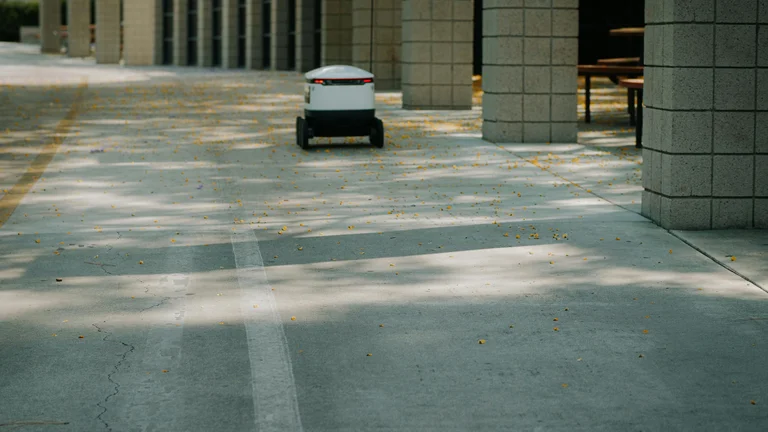The Rise of Autonomous Vehicles

Autonomous vehicles, often called self-driving cars, have significantly evolved in recent years. Major manufacturers are investing billions into this technology. Several prototypes have already run extensive tests on public roads. As these vehicles become more mainstream, their impact on various industries, particularly insurance, is worth examining.
These vehicles use various sensors, cameras, and artificial intelligence to navigate. They aim to reduce human error, a primary cause of vehicle accidents. The transition from human-operated to fully autonomous driving is gradual. Regulations are adapting to ensure safe deployment.
Insurance Challenges with Autonomous Vehicles
The introduction of autonomous vehicles creates new challenges for car insurance. Traditionally, car insurance policies depend on human drivers, focusing on personal liability. With these vehicles, the landscape shifts. The question arises, who is liable in the event of an accident? Is it the manufacturer, the software developer, or the vehicle owner?
Insurers must rethink how they assess risk. The data collected from vehicle sensors could enhance understanding of liability. However, the lack of historical data on fully autonomous vehicles poses a challenge. Adjusting premiums based on driverless technology may lead to significant changes in how policies are structured.
New Insurance Models
As autonomous technology evolves, new insurance models are emerging. One popular approach is pay-per-mile insurance. This model charges drivers based on actual vehicle usage, making it attractive for those who rarely drive. Additionally, usage-based insurance (UBI) can be effective, allowing insurers to use real-time data to adjust premiums according to driving behavior.
Another exciting model is product liability insurance. As manufacturers take on more responsibility for their vehicles, they face new risks. Policies covering software failures, sensor malfunctions, and hacking attempts are becoming crucial for manufacturers and operators of autonomous vehicles.
Regulatory Landscape
The regulatory landscape for autonomous vehicles is still developing. Government agencies are creating guidelines to ensure safety. These regulations influence the insurance sector. Insurers need to stay updated on legal changes that impact liability and coverage.
Each state has different laws regarding autonomous vehicles. Some states allow fully autonomous vehicles, while others enforce restrictions. Insurers must navigate this varying landscape, as regulations can significantly affect policy offerings.
The Future of Insurance in the Era of Autonomous Vehicles
The future of insurance will likely integrate more technology and data analysis. Insurers who can harness data from autonomous vehicles will have a competitive edge. Analytics can improve risk assessment and premium pricing.
As autonomous vehicles receive wider acceptance, consumer education will be essential. People must understand how their insurance needs change. This education will help consumers make informed decisions regarding their coverage.
| Aspect | Traditional Vehicles | Autonomous Vehicles |
|---|---|---|
| Liability | Driver responsible | Manufacturer & Software developer |
| Insurance Model | Standard policies | Pay-per-mile, product liability |
| Data Utilization | Minimal | Extensive data from sensors |
| Regulatory Environment | Standard state laws | Varying state laws on usage |
| Risk Assessment | Based on history | Real-time analytics |
FAQ - Autonomous Vehicles and Insurance
What is an autonomous vehicle?
An autonomous vehicle is a self-driving car capable of navigating without human intervention, utilizing sensors and artificial intelligence.
Who is liable in an accident involving an autonomous vehicle?
Liability in an accident may be shared between the vehicle manufacturer, software developers, and potentially the vehicle owner, depending on circumstances.
How will insurance policies change with autonomous vehicles?
Insurance policies will evolve to address new risks, focusing more on data-driven models, including pay-per-mile and product liability insurance.
What are some potential benefits of autonomous vehicles in terms of insurance?
Potential benefits include reduced premiums due to fewer accidents and improved data accuracy for more precise risk assessment.
How do regulations affect insurance for autonomous vehicles?
Regulations impact insurance by defining liability and coverage requirements. Insurers need to adapt to varying state laws on autonomous vehicles.
Autonomous vehicles significantly affect the insurance industry, raising questions about liability and prompting new models like pay-per-mile insurance. Insurers must adapt to evolving technology and regulatory landscapes to meet the changing needs of drivers and manufacturers.
Conclusão sobre Autonomous Vehicles and Insurance.